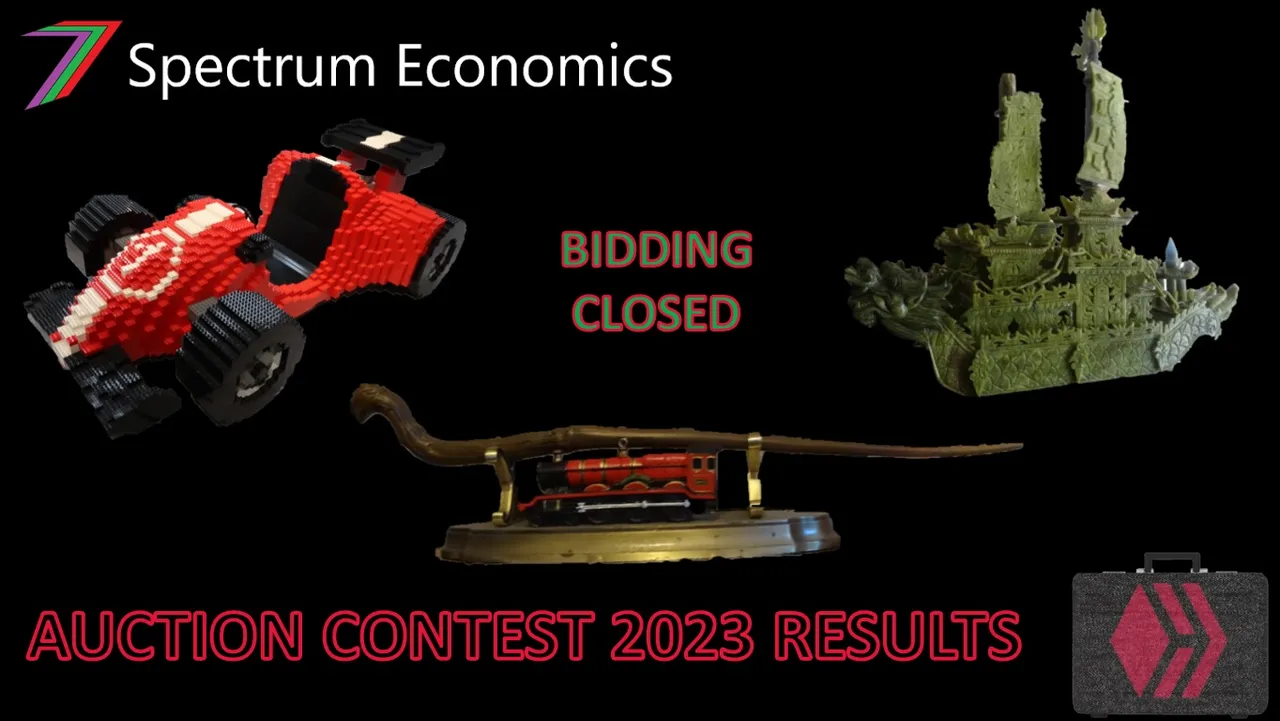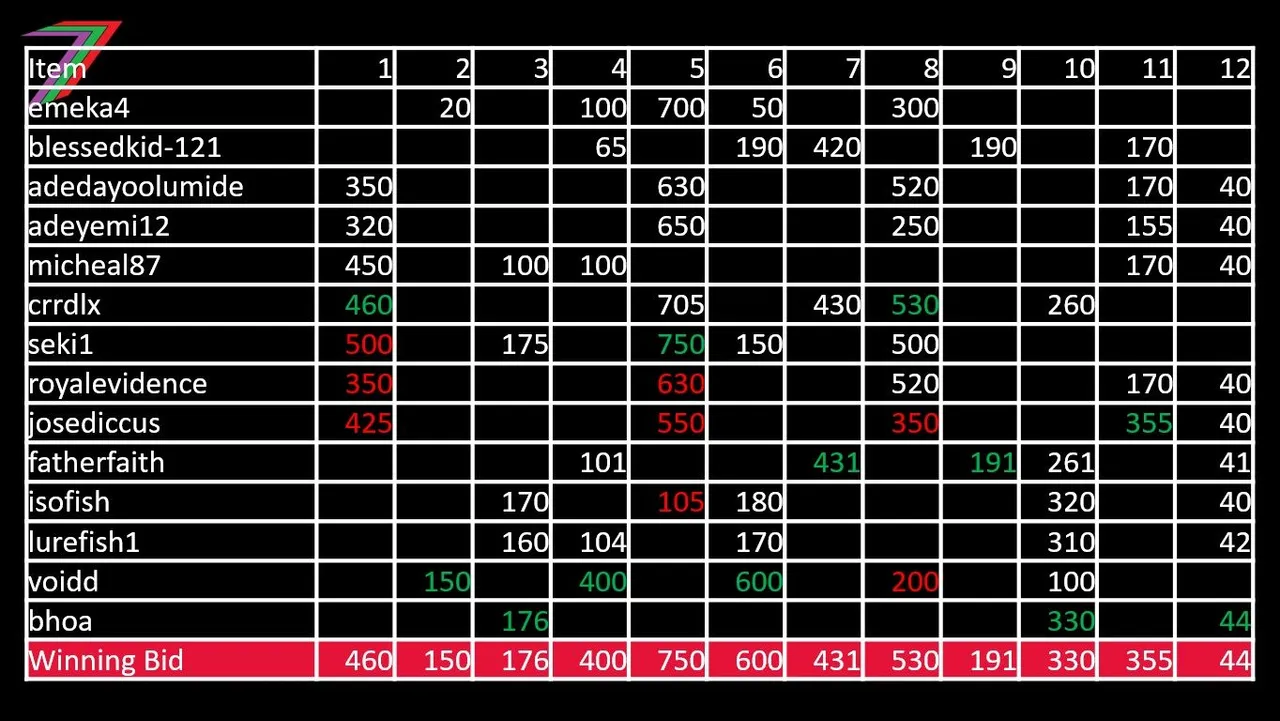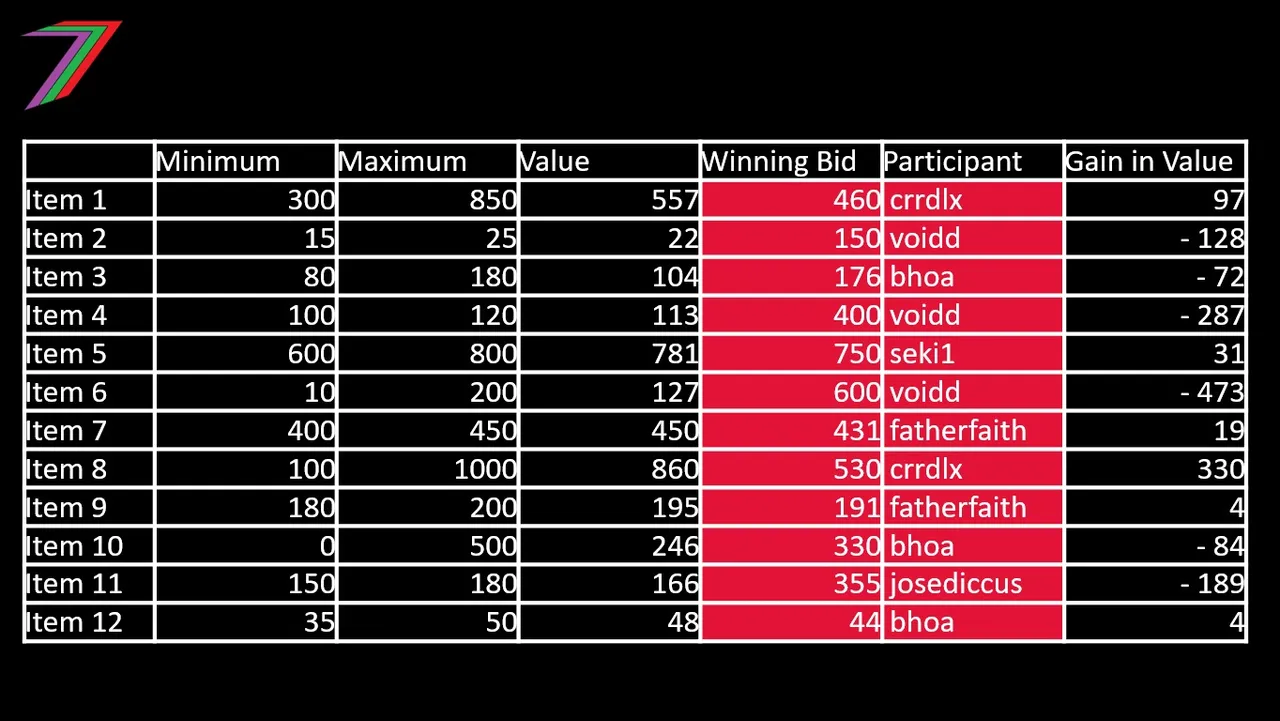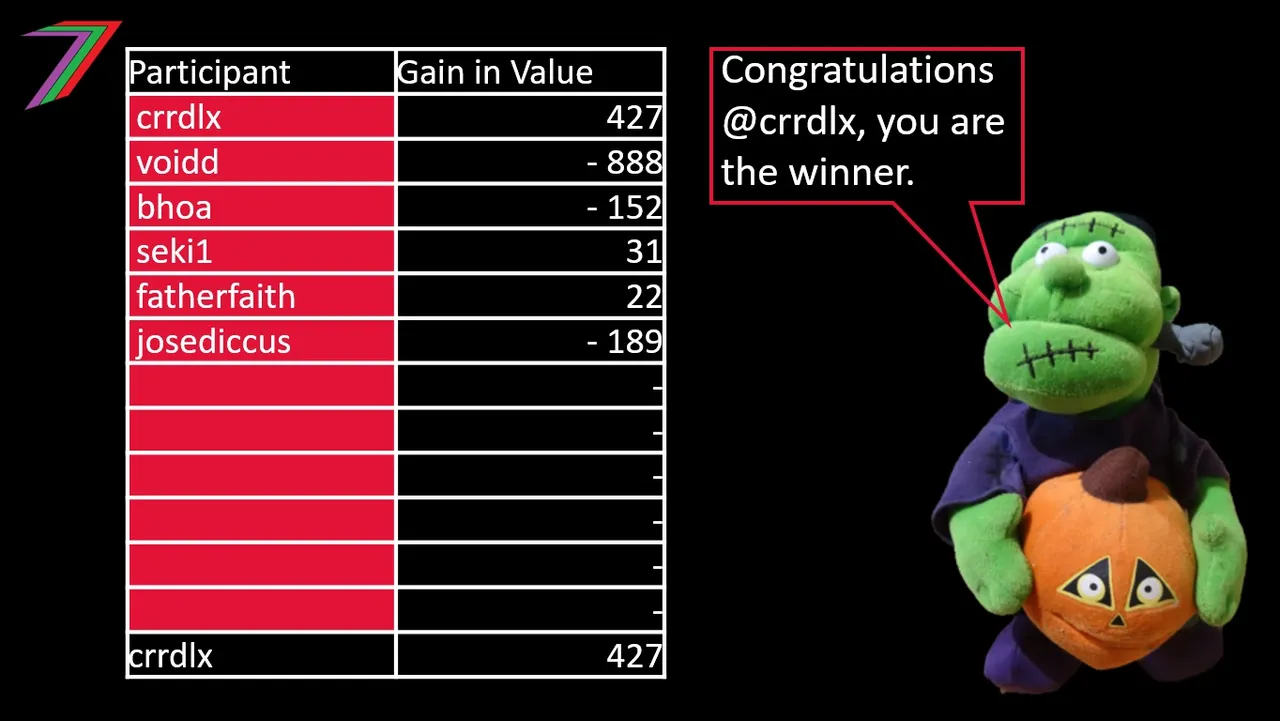Hi Everyone,

Welcome to the second economics contest results post for 2023. The auction contest was introduced in the Economics Challenge Series in 2021. Every month there will be a different type of contest. The auction contest may return later this year as part of the Economics Challenge Series.
Winner determined in this video
What is the Auction Contest?
The auction contest allows participants to bid on up to 5 of 12 items in an auction. The participant who bids the highest wins the item. Each item has a value. However, the values are not stated in the question. Instead, a range of values are stated. These values are generated using the Excel Model shown in the video in this post. Participants should aim to win the items without bidding over their values. For example, if an item is valued at $80 and the winning bid is $60, the participant gains $20. The gains and losses made by each participant from their winning bids is summated. The participant who has gained the highest value is the winner. If two participants obtain the same value. The participant who entered first wins. If nobody obtains a positive gain in value, the contest will not have a winner and the prize will be rolled over to the next contest in March.
Responses to the contest are made in the comments section of the contest post. The account with the winning entry will receive 30 Hive Power.
The format of the required entry is explained in detail in the challenge itself.
For a more detailed explanation, you can access the challenge post using the following link.
Results of Auction Contest
Table 1 contains the bids made by all participants and the winners of each auctioned item.
Table 1: Bids and winners of auctions

Note: Green font indicates winning bids and red font indicates bids after the bid limit has been reached.
Of the 14 participants who entered, 6 participants won at least one auctioned item. @void and @bhoa won 3 items each, @crrdlx and @fatherfaith won 2 items each, and @seki1 and @josediccus won 1 item each. Winning more items does not necessarily equate to obtaining the highest gain in value. The gains in value made per item won is critical in determining the overall winner.
Table 2 contains the values of each item (generated by the model) and the gains in value each participant made on their winning bids. Table 3 contains the overall gains in value made by each participant.
Table 2: Value of items and gains made from each item

Table 3: Overall gain in value made by participants

Congratulations to @crrdlx for winning the Auction Contest with a gain in value of $427. @crrdlx won Items 1 and 8 in the auction. @crrdlx made a gain of $97 on Item 1 and $330 on Item 8. @crrdlx wins 30 Hive Power.
Contest Tips and Analysis
@crrdlx played the game very well. @crrdlx entered midway through the contest. This was late enough to give him a chance to outbid the earlier entries but not too late to miss out on the items that had a limited number of bids. @crrdlx focused on Items that had limited bids. This strategy guaranteed winning Item 1 and placed him in a good position to win Items 5, 7, and 8; eventually winning Item 8. All of @crrdlx’s winning bids were below the expected value of the items. Expected value for Item 1 was $575 ((300+850)/2) and the expected value for Item 8 was $550 ((100+1000)/2). Both Items had a wide range of values. Therefore, there was a high risk of losing a significant amount on either or both Items 1 and 8. This risk appears worth it considering the high number of participants (14). The choices @crrdlx had made gave him more than a 50% chance of winning. The potential gain in value for the other participants was considerably lower, as their winning bids were much closer to the maximum value.
More posts

If you want to read any of my other posts, you can click on the links below. These links will lead you to posts containing my collection of works. These 'Collection of Works' posts have been updated to contain links to the Hive versions of my posts.
Hive: Future of Social Media

Spectrumecons on the Hive blockchain

▶️ 3Speak





